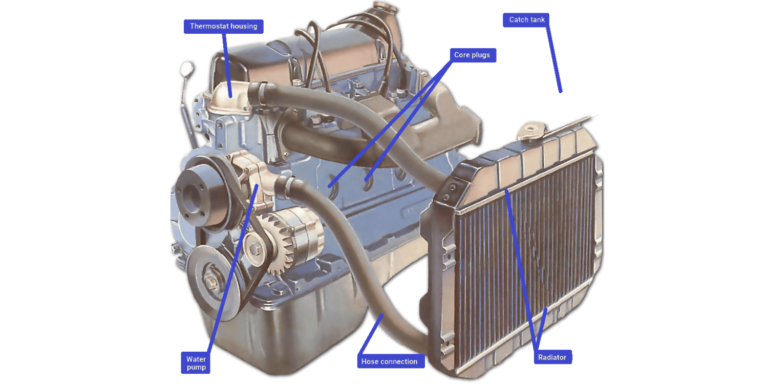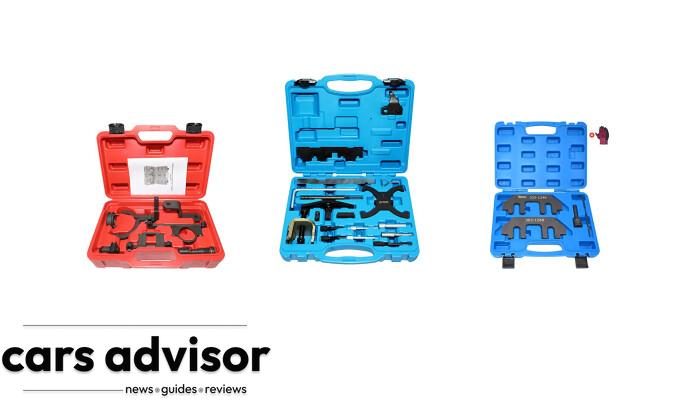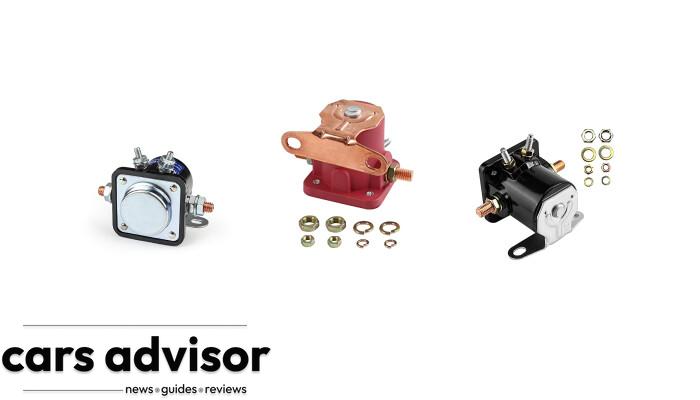Have you ever been driving your car, only to experience reduced engine power? It can be a frustrating and potentially dangerous situation. But don’t panic! Fixing reduced engine power is not as difficult as it may seem at first glance. With the right guidance and tools, anyone can restore their vehicle’s performance in no time.
In this article, we’ll explain what causes reduced engine power and how you can fix the issue yourself.
We know that some people are hesitant to take on such a big repair job by themselves – but with our help, you’ll have your car running smoothly again before you know it!
From diagnosing the problem to replacing parts, we’ll provide detailed instructions for fixing reduced engine power. So whether you’re concerned about your safety or simply want to save money on repairs, read on and get ready to restore your car back to its peak performance!
Defining The Problem: What Is Reduced Engine Power?
Reduced engine power is a major issue for many car owners. It can cause your vehicle to slow down or even stop running altogether. The problem can be caused by a few different things, so it’s important to identify the source of the reduced engine power before attempting to fix it.
One common cause of reduced engine power is an obstruction in the fuel system. This could be due to a clog in the fuel filter or injectors, or even something as simple as low fuel pressure.
Other causes include issues with spark plugs, air filters, and other components related to proper air-fuel mixture delivery. If these parts are not working properly, then the engine will not get enough oxygen and fuel to create sufficient combustion.
As a result, your vehicle won’t have enough power to keep going at its normal speed.
Common Causes Of Reduced Engine Power
Reduced engine power can be caused by a few different issues. One of the most common causes is an issue with the Mass Air Flow (MAF) sensor or Throttle Position Sensor (TPS).
If either of these sensors are malfunctioning, it will cause your vehicle to go into reduced power mode as a safety precaution. This reduces fuel and air intake, which in turn lowers your engine’s output.
Another possible cause could be an oxygen sensor problem. The oxygen sensor works with the exhaust system to measure how much unburned oxygen is left after combustion takes place in the cylinder.
If there is too much unburned oxygen being expelled from the exhaust pipe, then this could trigger a reduced engine power warning light on your dashboard.
There are also other conditions that may lead to reduced engine power such as low oil pressure, worn spark plugs, and clogged filters.
It’s important to have all of these components inspected regularly so you can keep your vehicle running properly and avoid potential problems down the road.
Taking precautions now can save you time and money later on!
Diagnosing The Issue: How To Check Your Vehicle
No one likes to experience reduced engine power, but it can happen. So it’s important to know how to diagnose the issue and find out what’s going on with your vehicle. Here are some steps that you should take:
- Check the check engine light – if it is illuminated, this could be a sign that something needs attention.
- Inspect all of your spark plugs for signs of wear or damage. If they are worn out, replace them as soon as possible.
- Make sure all fluid levels are at the proper levels and top off any fluids that may be low.
It’s also recommended to get a professional inspection from an auto repair shop to make sure there aren’t any other underlying issues causing the reduced engine power.
A technician will be able to pinpoint exactly where the problem lies and advise you on how best to proceed in fixing it. By taking these steps, you’ll have a better chance of getting your car running smoothly again in no time!
Examining The Throttle Body And Sensors
The first step to fixing a reduced engine power issue is examining the throttle body and sensors. To do this, you’ll need to unplug the connectors from the throttle body and oxygen sensors.
Now inspect both components for any signs of wear or damage. If either component looks like it needs replacing, then replace them with new ones before continuing your troubleshooting process.
Next, use a multimeter to test if there’s voltage going through each connector on the throttle body and oxygen sensor. If no voltage is detected, then check all wiring connections leading up to these two components and make sure they’re tightened properly.
Also ensure that the ground connection on both components have power running through them as well. Finally, look at the rubber boots around each connection point for any cracks or other damage that may be preventing an electric current passing through properly.
Once you’ve checked all of these things, turn off your vehicle and reconnect everything back together again. Then start up your vehicle and see if the problem has been fixed – hopefully it has!
Keeping An Eye On The Warning Lights
Keeping an eye on the warning lights in your car is important if you want to make sure any issues with reduced engine power are addressed quickly.
The engine light will be one of the first indicators that something isn’t right and it’s essential that you take action as soon as possible.
If for some reason this light does come up, it means there may be a problem with how your vehicle is running or even more serious problems such as faults with the fuel injection system.
It’s also worth making sure all other warning lights are working correctly too. This includes your oil pressure light, tire pressure indicator and battery charge warning.
All these can help prevent further damage to your engine and alert you when maintenance needs to be done.
Checking these regularly should give you peace of mind knowing that potential issues have been caught before they become major repairs.
If any of these lights do appear while driving, try not to panic – instead pull over somewhere safe and check what the issue might be.
It could just mean topping up your fluids or simply resetting the signal but either way it’s best to get it checked out by a mechanic so nothing catastrophic happens down the line.
Checking For Clogged Catalytic Converters
Transitioning from the previous section, if you have a ‘Reduced Engine Power’ warning light on your dashboard, it could be caused by a clogged catalytic converter. To check for this problem, we will need to inspect our vehicle’s exhaust system and its components.
A car’s catalytic converter is responsible for converting harmful gases produced by the engine into less toxic substances before they are released out of the tailpipe.
If any part of the converter becomes blocked or damaged, then it won’t work properly and can cause problems with the performance of your vehicle.
We can use a table to easily identify what needs to be checked when inspecting for a clogged catalytic converter:
| Part | Check For | Signs |
|---|---|---|
| Exhaust Manifold | Loose Bolts/Leaks | Rattling Noises & Smells |
| Catalytic Converter | Damage/Clogging | Reduced Acceleration & Rough Idling |
| O2 Sensors & Wires | Corrosion/Disconnection | Bad Fuel Economy & Poor Performance |
| Muffler | Rust | Loud Booming Sounds |
If any issues are found while inspecting these parts, then it’s best to take your car in for professional repairs as soon as possible.
Ignoring an issue like this could lead to further damage down the road and potentially costly repairs.
A mechanic may also suggest checking the ‘Check Engine’ light code using a scanner tool which can help pinpoint exactly where the issue lies within your vehicle’s exhaust system.
Inspecting And Replacing Spark Plugs
Inspecting and replacing spark plugs is a vital step to fixing reduced engine power. Spark plugs are small devices that help ignite the air-fuel mixture inside your vehicle’s engine, which can be affected by dirt or oil build up over time.
You’ll need to inspect them regularly for any signs of damage or wear and tear. If you notice anything wrong with them, it’s important to replace them as soon as possible.
To do this, first make sure you have all the necessary tools on hand – such as a socket wrench and spark plug socket – and that you’ve drained out old engine oil before beginning.
Then follow the manufacturer’s instructions carefully when removing each spark plug, being careful not to strip any threads while doing so.
Once they’re removed, clean off any carbon deposits from their surface using a wire brush or similar tool.
Finally, insert new replacement spark plugs into place and tighten them securely. Doing these steps will help ensure your vehicle runs safely and efficiently again in no time!
Evaluating Fuel Delivery Systems
When reduced engine power is an issue, it’s time to check the fuel delivery system. From air filters and fuel pumps to their connecting hoses and lines, every part of a vehicle’s fuel delivery system must be in perfect working order for the engine to perform optimally.
Starting with the basics, begin by checking the air filter; if it’s dirty or clogged then it can restrict airflow into the engine which will significantly reduce performance.
Next, make sure all hoses are connected properly and that there are no signs of wear-and-tear such as cracks or holes. After this, examine the fuel pump itself and ensure that its connections are tight and secure.
If any issues have been identified so far then they need to be fixed straight away before testing whether these repairs have addressed the problem.
Once everything looks good, start up your car again and see if the reduced engine power has gone away – if not then further investigation may be necessary!
Testing Transmission Fluids And Filters
It is important to test the transmission fluid and filters when fixing a reduced engine power issue. Transmission fluids are vital in keeping your vehicle’s engine running smoothly, while filters help protect it from dirt and debris.
To begin testing, you will need some basic tools such as gloves, rags, and an oil pan or container for any spilled fluids.
Start by checking the transmission dipstick for its level of fluid. If it appears low or smells burnt then you should immediately add more transmission fluid before continuing with other tests.
Next, check the transmission filter for signs of clogs or blockages that could be causing issues with flow. Make sure to replace the filter if needed so that there is no interruption during operation.
Finally, take your car out on a short drive and observe how it runs – this can help detect problems with shifting gears or other symptoms associated with reduced engine power.
- Check transmission fluid levels
- Inspect transmission filter for clogs/blockages
- Take car out on short drive & observe performance
- Listen for any strange noises coming from the engine or transmission
Avoiding Airflow Obstructions
When it comes to reducing engine power, the first thing you should do is make sure there are no air flow obstructions.
This could be anything from a blockage in the intake manifold to a clogged air filter. If either of these is present, it can cause your car’s engine to run sluggish or even stall out.
Additionally, check that any hoses or pipes leading into and out of your vehicle’s air flow sensor are not blocked by debris or restricted in any way.
Lastly, ensure that the accelerator pedal isn’t stuck or jammed– this could also lead to reduced engine power.
Taking steps like these will help reduce the chances of your vehicle experiencing reduced engine power caused by airflow obstruction issues.
Paying attention and correcting problems early on can save you time and money in the long-run!
Addressing Electronic Throttle Bodies
Imagine driving down the highway and feeling like you’re stuck in first gear. You press down on the accelerator pedal, but nothing happens; your car is going no faster. This is a symptom of reduced engine power, which can be caused by an electronic throttle body (ETB) problem.
To address this issue, it’s important to understand how ETBs work: they are responsible for controlling the amount of air that enters into the combustion chamber of a car’s engine.
When something goes wrong with them, it affects how much fuel gets burned and therefore limits the output of power from the engine.
| Component | Function | System Affected |
|---|---|---|
| ETB | Controls air entering combustion | Engine performance |
| Pedal | Sends signal to open/close ETB valve | Throttle response & RPMs |
An easy way to test if there may be a problem with your vehicle’s ETB is to try pressing down hard on the accelerator pedal while keeping your foot off the brake.
If your car does not respond as quickly as usual or takes longer than normal to accelerate, then this could indicate an issue with the ETB.
The next step would be to take your car into a mechanic who can run further diagnostics and identify what needs to be fixed in order fix reduce engine power issues for good!
Analyzing Mass Airflow Sensors
The first step in fixing a reduced engine power problem is to check the mass airflow sensor. This part of your car tells the computer how much air is entering the engine and helps regulate fuel injection.
If this component isn’t working properly, it can cause issues with engine performance. To analyze the mass airflow sensor, start by checking its wiring harness for any signs of damage or corrosion.
Then, inspect the throttle pedal. The throttle position should be in sync with the opening and closing of the throttle body plate. If it’s not, you may need to adjust it or replace it if necessary. Lastly, test the voltage output from the mass airflow sensor using an ohm meter.
It should change as you press on the accelerator pedal; if not, then you’ll likely need to replace or clean out this part to get back up and running again.
Monitoring Accelerator Pedal Sensors
Now that you have analyzed the mass airflow sensor, it’s time to move on to monitoring the accelerator pedal sensors. This is a crucial part of troubleshooting reduced engine power issues as these sensors are responsible for letting your car know how much gas it needs.
The first step in checking this system is to inspect the wiring and make sure everything looks good. If there appears to be any damage or corrosion, then you will need to replace those parts before continuing.
After ensuring the wiring is all connected properly, it’s important to check the actual accelerator pedal sensor itself. You can do this by testing its resistance with a multimeter and comparing it against manufacturer specifications.
If you find that the readings don’t match what they should be, then you’ll need to replace the sensor.
Once you have replaced or tested both components, start up your vehicle again and see if the issue has been resolved. If not, continue troubleshooting other systems until you discover what may be causing your reduced engine power problem.
Taking Care Of Your Car’s Engine
Taking care of your car’s engine is critical to keep you safe on the road. Regular maintenance and preventive repairs are essential for reducing potential problems in the future. Here are some tips on how to fix reduced engine power:
Check Your Car’s Fluids: Make sure to check all your fluids regularly, including oil levels, coolant levels, brake fluid levels, and transmission fluid. This will help ensure that everything is functioning optimally. Be sure to replace any parts or fluids as soon as they show signs of wear.
Inspect Your Belts & Hoses: It’s important to inspect your belts and hoses for any cracks or leaks which can cause a decrease in performance. If necessary, have them replaced right away by a professional mechanic.
Replace Spark Plugs and Oxygen Sensors: The spark plugs and oxygen sensors need to be checked regularly on Chevy Silverado models, especially if there is an issue with reduced engine power. Replacing these components may resolve the problem quickly without having to make major repairs.
Finally, it’s important to perform regular maintenance on your vehicle such as changing the oil filter and air filter every few months so that you can avoid costly repair bills down the line. By making sure that your vehicle is running smoothly and efficiently, you can save yourself time and money!
Long-Term Impacts Of Reduced Engine Power
The previous section talked about how to take care of your car’s engine. Now, it is important to understand the long-term impacts that reduced engine power can have on your vehicle.
If you do not address the issue of reduced engine power in a timely manner, there may be serious and expensive consequences.
One consequence could be clogged catalytic converters which reduce the performance of an internal combustion engine by blocking exhaust flow. Another potential outcome is significant damage to your engine due to lack of maintenance or improper repair services.
Reduced fuel efficiency, increased emissions levels, and decreased drivability are all other possibilities if this problem persists for too long.
It is crucial that you diagnose the root cause of any issues with your car’s engine as soon as possible so that more costly damages can be avoided.
Ignoring these problems can result in major safety concerns while driving on our roads and highways. Remember, being proactive rather than reactive when it comes to maintaining your vehicle will save time and money down the line!
Wrapping Up
In conclusion, reduced engine power can be a frustrating issue to have. It’s important to stay alert and pay attention to warning signs so you can avoid the long-term impacts of this issue. Taking care of your car’s engine is essential for avoiding any issues like reduced engine power in the future.
The first step is always diagnosing the cause. This can involve examining different parts of the vehicle including the throttle body and sensors, as well as ensuring all warning lights are working correctly. Additionally, it’s important to check mass airflow sensors and accelerator pedal sensors to ensure everything is functioning properly.
Finally, regular maintenance on your car will go a long way towards keeping it running smoothly and preventing any issues from occurring down the road. Have you been taking proper care of your car? If not, now might be a good time to start!




















